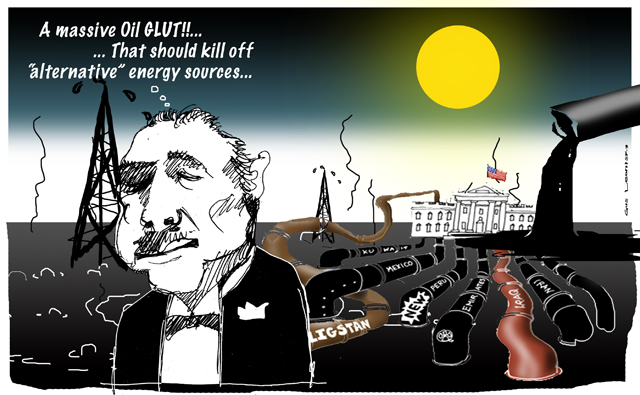Search
Democracy Links
Member's Off-site Blogs
after COP26, OPEC45...
 oil...
oil...
Global demand for crude oil (including biofuels) in 2020 fell to 91 million barrels per day and is projected to increase to 96.5 million barrels per day in 2021. The decrease in 2020 was due to the economic and mobility impacts of the coronavirus pandemic, including widespread shutdowns across the world. When compared to the daily oil demand of 86.4 million barrels in 2010, the increasing demand trajectory that occurred in the past decade is nevertheless still clear.
Oil is an important and versatile substance, used in different ways and in different forms for many applications. The road sector is the largest oil consuming sector worldwide. It accounts for over one third of the global demand for oil, largely due to reliance on motor spirits made from petroleum. The OPEC projects global oil product demand to reach 109 million barrels per day by 2045, with transportation fuels such as gasoline and diesel expected to remain the most consumed products. Diesel and gasoil demand is forecast to amount to 30 million barrels per day in 2045, up from 26.4 million barrels in 2019. Gasoline demand is forecast at 27.4 million barrels by 2045.
Despite oil producing bodies such as the OPEC seeing continued importance for crude oil in the future, efforts have been made within the energy industry in finding an alternative to the fossil fuel. One such alternative generating great enthusiasm is hydrogen. The most abundant chemical element in the universe has become of particular interest due to its potential as an energy carrier. Similar to oil it may serve as a feedstock or main ingredient for transportation fuels, energy generation and storage, and also chemicals production. While today it is mainly won from natural gas conversion (so-called grey hydrogen), most investments are aimed at making hydrogen production through electrolysis using renewable electricity (green hydrogen) more cost efficient. Oil refineries and ammonia production facilities are the main consumers of hydrogen as of 2019, with the transportation sector accounting for less than one percent.
Read more:
https://www.statista.com/statistics/271823/daily-global-crude-oil-demand-since-2006/
FREE JULIAN ASSANGE NOW ••••••••••!!!!
- By Gus Leonisky at 26 Nov 2021 - 4:52am
- Gus Leonisky's blog
- Login or register to post comments
Recent comments
1 hour 59 min ago
7 hours 14 min ago
7 hours 31 min ago
7 hours 36 min ago
7 hours 47 min ago
19 hours 5 min ago
1 day 5 hours ago
1 day 5 hours ago
1 day 5 hours ago
1 day 6 hours ago